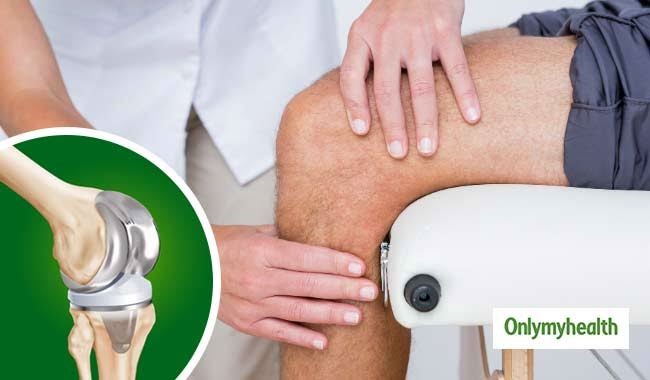
Knee replacement is one of the most successful methods in medical history. Patients who are suffering from knee arthritis have a kind of the second innings after getting joint replacement surgery. Knee replacement surgery removes their dilemma of age-long physical restriction due to pain and helps them to regain their confidence and lead a pain-free lifestyle. You need to take care of the replaced knee to avoid any complications:
- Immediately after surgery, you will be given Ice packs and DVT pump machine to prevent inflammation, swelling and deep vein thrombosis in the leg. You should also move your ankle and foot to maintain the circulation.
- You are allowed to take a turn on either side for a comfortable sleep.
- As soon as the pain subsides, you may be asked to stand up and take a few steps with the aid of the walker and in the presence of the therapist.
.jpg)
- Your diet will become normal, and there are no specific restrictions as far as the knee surgery is concerned.
- Never to torque or twist the operated knee. This can lead to fall and dislocation of the knee. It is an emergency, and you should report to your doctor immediately or the nearest hospital for evaluation.
- You have to use a commode of approximately 18 inches of height, or you may use a commode chair for the initial few weeks. This can be removed usually after 4 to 6 weeks.
- While getting up from sitting position slide towards the edge of the seat and use arms of the chair or walker for the support to get up. You may require a walker or stick for an initial 4 to 6 weeks. The comfort will increase with each passing day and regular stretching exercises.
Also Read: Alkaline Water: Is This Really Good For Your Health?
.jpg)
- Avoid sitting on the floor or low seat. While getting up from a low place or level, we put a lot of bending and twisting force on the replaced knee in a weight-bearing position. This can lead to pain in the knee and will also reduce the life of artificial knee.
- While bathing, you can take a standing place under the shower or can use a stable plastic chair. Also, cover the knee with clean drape available in the market to pack our food.
- Wear comfortable, non-skid shoes and avoid putting on body weight.
- While climbing stairs hold the sidebars of the stairs. Use your non operated leg to climb up the stairs and to come down use your operated leg. Always use one step at a time.
Also Read: Drinking Water In Standing Position Is Bad, Know The Reasons
- Look for warning signs of swelling, redness, rashes etc. Report to your doctor urgently for further evaluation.
- You should do regular stretching and strengthening exercises of the muscles which move the knee joint. You should take some rest in between the activities.
- You should be able to do all activities of daily living independently when you leave for home. You can even cook for yourself. You should take a diet rich in calcium and protein to build up your muscles and make the bone healthy.
- You need to manage other medical conditions like diabetes and hypertension in an optimum way to avoid any complications.
(With inputs from Dr Subhash Jangid, Director and Unit Head, Institute of Bone and Joint, Fortis Memorial Research Institute, Gurugram)
Read more on Miscellaneous
How we keep this article up to date:
We work with experts and keep a close eye on the latest in health and wellness. Whenever there is a new research or helpful information, we update our articles with accurate and useful advice.
Current Version
